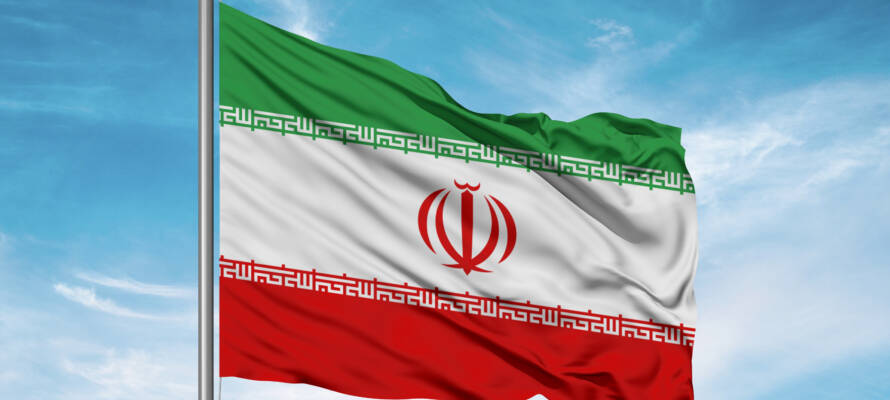Raisi’s death will be the beginning of a power struggle that will shake the Islamic Republic and the Middle East for months.
By Shay Khatiri, Middle East Forum
State media report that a helicopter carrying Iran President Ebrahim Raisi had a “hard landing” amidst bad weather.
Rescue teams reportedly are struggling to reach the mountainous and forested site. Raisi was returning from a visit to the Iran-Azerbaijan border. If Raisi is dead or incapacitated, there will need to be an emergency succession in Iran.
How Would Presidential Succession Occur?
Raisi’s demise, if confirmed, would not be the first death of a sitting Iranian president, In 1981, the Mojahedin-e Khalq of Iran assassinated President Mohammad-Ali Rajai.
The Islamic Republic’s constitution simply states that when a president dies, a new president “would be chosen.”
In 1981, authorities called a new election but, in 1989, an amended constitution gave the Supreme Leader, currently Ali Khamenei, further power to decide.
Under the current constitution, there is no mandate for a new election. If the president is dead or unable to perform his duties for longer than two months, the first vice president, the speaker of the parliament, and the chief justice, with the consent of the Supreme Leader, form a council to choose the succession mechanism.
In effect, this means Khamenei will decide. The Supreme Leader directly appoints the chief justice without parliamentary consent. Gholam-Hossein Mohseni-Eje’i, the current chief justice, is a loyal foot soldier of Khamenei.
The same is true of Mohammad-Bagher Ghalibaf, former Islamic Revolutionary Guard Corps (IRGC) general and former mayor of Tehran, who survived many rounds of Khamenei’s purges.
The first vice president, Mohammad Mokhber, has been a low-profile figure who will certainly consent to the Supreme Leader’s will.
There are two possible outcomes. Either a new election is called, or Khamenei will dictate that the council chooses a single person to avoid an election in time of crisis. Ghalibaf, who has long aspired to the presidency, could finally get his wish.
What Will Iranians Believe?
Even if the crash was innocent, Iranians embrace conspiracy theories. Iranian officials have died under suspicious circumstances and “hard landings.”
That the helicopter crash occurred so soon after the first open and direct Iran-Israel military confrontation will lead many Iranians and perhaps the regime itself to blame Israel.
Still, other conspiracies could emerge. Many Iranians saw Raisi’s presidency as an audition to succeed the 85-year-old cancer-stricken Khamenei as Supreme Leader, but Khamenei’s son Mojtaba also coveted the top position.
The factional rivalry has simmered just below the surface. Raisi has long been the IRGC’s darling, but many in the clergy favor Mojtaba.
This is why the powerful Qom seminary hired Mojtaba, who lacks scholarly credentials, to be a lecturer. By embracing Khamenei’s son, the seminary sought to signal its support for Raisi’s rival.
Indeed, assassinating Raisi could make sense. Mojtaba now enjoys his father’s protection, but that support will not survive Ali Khamenei’s death. Raisi, on the other hand, was the prosecutor-general and had dirt on everyone—during a presidential debate, he flashed a document detailing his rival’s corruption to scare him.
In essence, Raisi can politically brawl like a street thug and blackmail like J. Edgar Hoover. If Raisi is dead, Mojtaba will be popping the non-alcoholic champagne. This will make him the favorite to succeed his father—for now.
What Would Raisi’s Death Mean for the Race for a New Supreme Leader?
The IRGC will scramble to find a new person to elevate. After Aytaollah Ruhollah Khomeini’s death in 1989, Khamenei rose as a compromise candidate because other factions saw him as weak if not a buffoon.
He survived the trial by fire and transformed himself into a long-reigning leader, carefully maneuvering to eliminate those who elevated him so they could not control him.
Today, however, with the IRGC disproportionately powerful, it will be difficult to make similar compromises or cede ground to rival factions and individuals. Ghalibaf can be president, but he cannot rise to Supreme Leader because he is not a cleric.
While Mojtaba might rise up, a family succession would be problematic politically. After all, first Khomeini and then Khamenei argued that hereditary rule under the shah was illegitimate, and so they would be hard-pressed to sell hereditary leadership to the Iranian people now.
The wildcard, however, rests in a debate that raged in the first years after the 1979 Islamic Revolution. The Islamic Republic does not require a unitary Supreme Leader.
Theoretically, the constitution allows for a council of supreme leadership.
This leads to a scenario that, once Khamenei dies, the state will argue that Khomeini and Khamenei were otherworldly men who reached the peak of wisdom and virtue. Their turbans can be filled now, the argument will go, only by the combined talents of a group of men.
Whatever happens next, however, Raisi’s “hard landing” will mark the first chapter in a game of musical chairs that will consume the Islamic Republic for months and will set the stage not only for the post-Raisi-era, but the post-Khamenei one as well.
